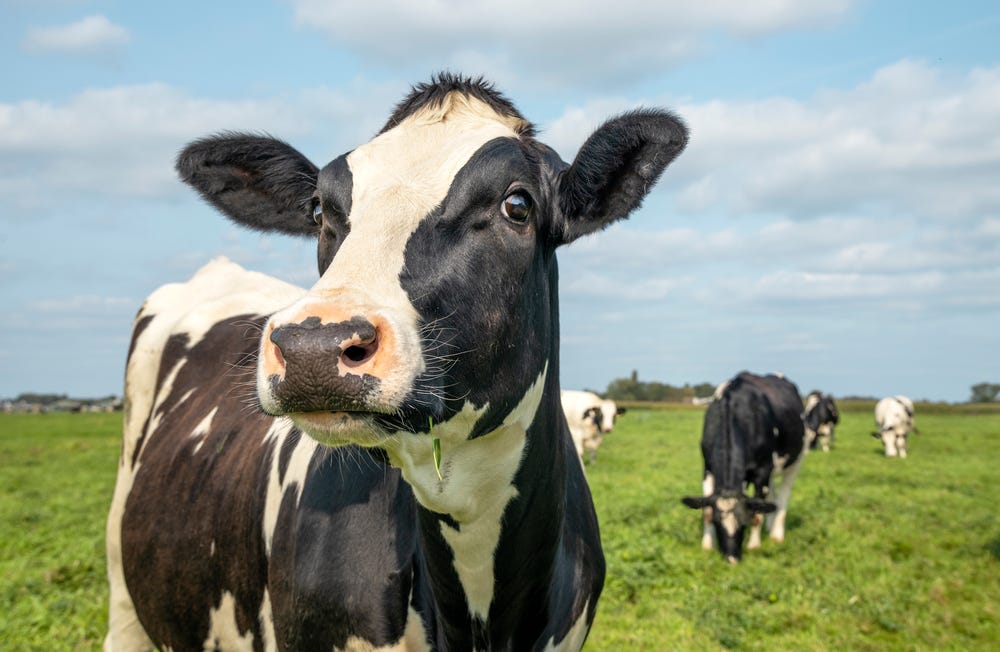Scientists create sustainable and affordable lithium batteries from cow hair
Researchers have repurposed cow hair from tanneries to engineer more advanced and eco-friendly lithium-sulfur batteries.

Researchers developed a prototype mechanical sensor that harnesses vibrational energy from sound waves, eliminating the need for external power sources. (CREDIT: Astrid Robertsson / ETH Zurich)
In a groundbreaking initiative, researchers hailing from Argentina's Conicet and the National University of Córdoba (UNC) have repurposed cow hair from tanneries to engineer more advanced and eco-friendly lithium-sulfur batteries.
This collaboration, bolstered by support from YPF – Technologies (Y-TEC), a subsidiary of YPF, and Conicet, has resulted in a patent filed in the United States.
Victoria Bracamonte, Guillermina Luque, and Andrea Calderón procured a batch of cow hair from a tannery worker, aiming to convert these discarded hairs into biochars.
Working alongside the Sustainable Energy Laboratory (LAES) team at UNC, their mission was to transform this waste into the essential material for crafting next-generation lithium batteries.
Notably, cow hair represents a significant byproduct of tanneries, presenting immense potential for conversion, particularly in a country like Argentina. A staggering 85 kg of residual hair is generated from each ton of processed cowhide.
Traditionally, batteries comprise a graphite anode and a cobalt-nickel cathode, relying on expensive, environmentally harmful, and limited resources.
However, by opting for sulfur as a cathode material, the objective extends beyond environmental preservation to cost reduction. The utilization of biochars derived from organic waste, such as cow hair, is instrumental in shaping the cathode and establishing its structure.
Related Stories:
Victoria Bracamonte, a Conicet researcher and UNC Faculty of Chemical Sciences (FCQ) professor, spearheaded the process of washing and deodorizing the hair.
Subjected to two heating processes, reaching temperatures of up to 900°C, sulfur was introduced into the mix.
Subsequently, a prototype battery resembling a wristwatch was assembled, featuring a pure lithium anode. According to the researchers, the attained results showcased exceptional electrochemical performance.
YPF – Technologies (Y-TEC), in collaboration with Conicet, provided crucial support for the project and has already secured a patent in the United States.
Reflecting on the endeavor, Conicet researcher Victoria Bracamonte expressed, "It was two years of arduous work, compounded by the challenges of the pandemic."
She outlined the future steps, emphasizing the need to scale up production and establish a symbiotic relationship between the tannery and battery industries to foster a circular process. Bracamonte underlined the long-term nature of these ambitions.
Echoing Bracamonte's sentiments, Ezequiel Leiva, a Conicet and UNC researcher affiliated with LAES, projected that these batteries might only hit the market in a decade.
He emphasized the transformative nature of the technology, distinct from current battery paradigms.
Leiva underscored the necessity for extensive development and industrial-scale testing, foreseeing a coexistence with existing battery technologies rather than outright replacement.
"The sensor works purely mechanically and doesn’t require an external energy source. It simply utilizes the vibrational energy contained in sound waves," explains Robertsson.
This innovation could revolutionize various industries, from infrastructure monitoring to medical device technology. Recently detailed in the journal Advanced Functional Materials, the sensor operates by detecting specific sound waves, such as particular words or tones, which cause it to vibrate. This vibration generates a small electrical pulse, effectively powering on associated electronic devices.
Related Stories:
The prototype, developed at the Switzerland Innovation Park Zurich in Dübendorf, has already been patented. It can distinguish between spoken words like "three" and "four," with "four" generating more sound energy and thus activating the sensor.
Future iterations aim to recognize up to twelve different words, facilitating applications in machine commands and beyond.
One of the sensor's remarkable features is its composition as a metamaterial, where its unique properties stem from structure rather than material. "Our sensor consists purely of silicone and contains neither toxic heavy metals nor any rare earths, as conventional electronic sensors do," highlights Serra-Garcia. Comprising interconnected plates and springs, the sensor's design enables it to respond selectively to specific sound sources.
Newer models of the sensor are highly miniaturised and fit on a fingertip. (CREDIT: Marc Serra-Garcia / Amolf)
The potential applications for these battery-free sensors are vast. In infrastructure monitoring, they could detect structural flaws in buildings or bridges by recognizing characteristic sound or wave patterns. Similarly, in the oil industry, they could identify leaks in decommissioned wells by detecting escaping gases, offering a cost-effective and low-maintenance solution.
Moreover, these sensors hold promise for medical devices, such as cochlear implants, which require continuous power for signal processing. The current reliance on batteries necessitates frequent replacements, posing challenges for users. However, with the integration of battery-free sensors, devices could operate efficiently without the need for frequent maintenance.


(Left) High miniaturization: 100 sound-sensitive elements fit into just 1x1 mm. (Right) Enlarged section of the newer design of the sound-sensitive sensor: The individual elements are only a few micrometers in size. (CREDIT: Marc Serra-Garcia / Amolf)
"In addition to medical devices, there's significant interest in zero-energy sensors across various industries," notes Serra-Garcia, who now works at AMOLF, a research institute in the Netherlands. He and his team are dedicated to further refining the technology, with plans to unveil a solid prototype by 2027. If commercial interest remains low, they are prepared to establish their startup to bring this innovative solution to market.
From infrastructure monitoring to medical device technology, these sensors have the potential to reduce waste, lower maintenance costs, and improve efficiency across various industries. With ongoing research and development efforts, the future of sensor technology looks promising, driven by innovations that prioritize sustainability and efficiency.
For more science news stories check out our New Innovations section at The Brighter Side of News.
Note: Materials provided above by The Brighter Side of News. Content may be edited for style and length.
Like these kind of feel good stories? Get the Brighter Side of News' newsletter.
Joshua Shavit
Science & Technology Writer | AI and Robotics Reporter
Joshua Shavit is a Los Angeles-based science and technology writer with a passion for exploring the breakthroughs shaping the future. As a contributor to The Brighter Side of News, he focuses on positive and transformative advancements in AI, technology, physics, engineering, robotics and space science. Joshua is currently working towards a Bachelor of Science in Business Administration at the University of California, Berkeley. He combines his academic background with a talent for storytelling, making complex scientific discoveries engaging and accessible. His work highlights the innovators behind the ideas, bringing readers closer to the people driving progress.



